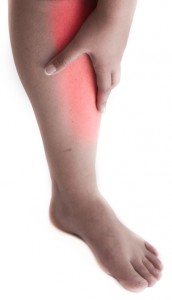 The term ‘shin splints’ is a general term used to describe pain experience at the front and/or inside of the shin bone (tibia). It is referred to medically as medial tibial stress syndrome and is often described by the phrase “too much, too soon”. They often begin after physical activity, especially when the intensity of activity has recently been increased or just started. Shin splints need to be differentiated from other conditions that often present with similar symptoms in the same region of the leg such as compartment syndrome, tibialis anterior tendonitis and a tibial stress fracture.
The term ‘shin splints’ is a general term used to describe pain experience at the front and/or inside of the shin bone (tibia). It is referred to medically as medial tibial stress syndrome and is often described by the phrase “too much, too soon”. They often begin after physical activity, especially when the intensity of activity has recently been increased or just started. Shin splints need to be differentiated from other conditions that often present with similar symptoms in the same region of the leg such as compartment syndrome, tibialis anterior tendonitis and a tibial stress fracture.
What causes shin splints?
 It is important to note that because there is no consensus on the definition of shin splints and it is used as a broad or general term, it is difficult to describe the exact cause. The thoughts around the mechanism of action includes:
It is important to note that because there is no consensus on the definition of shin splints and it is used as a broad or general term, it is difficult to describe the exact cause. The thoughts around the mechanism of action includes:
- Micro-tears in the muscles attached to the front and/or side of the shin bone
- Inflammation of the tissue sheath around the shin bone (periosteum)
- Inflammation of a muscle coming away from the tibia
- High levels of physical activity
- Flat feet and pronation
- Poor (or worn out) footwear
- Largely favouring and overusing one foot over the other during physical activity
- Tight muscles
- Hormonal imbalances in females
- Type of surface on which activity is performed
- Decreased flexibility, especially in the calf muscles
- Low bone mineral density (Vitamin D or calcium deficiency)








